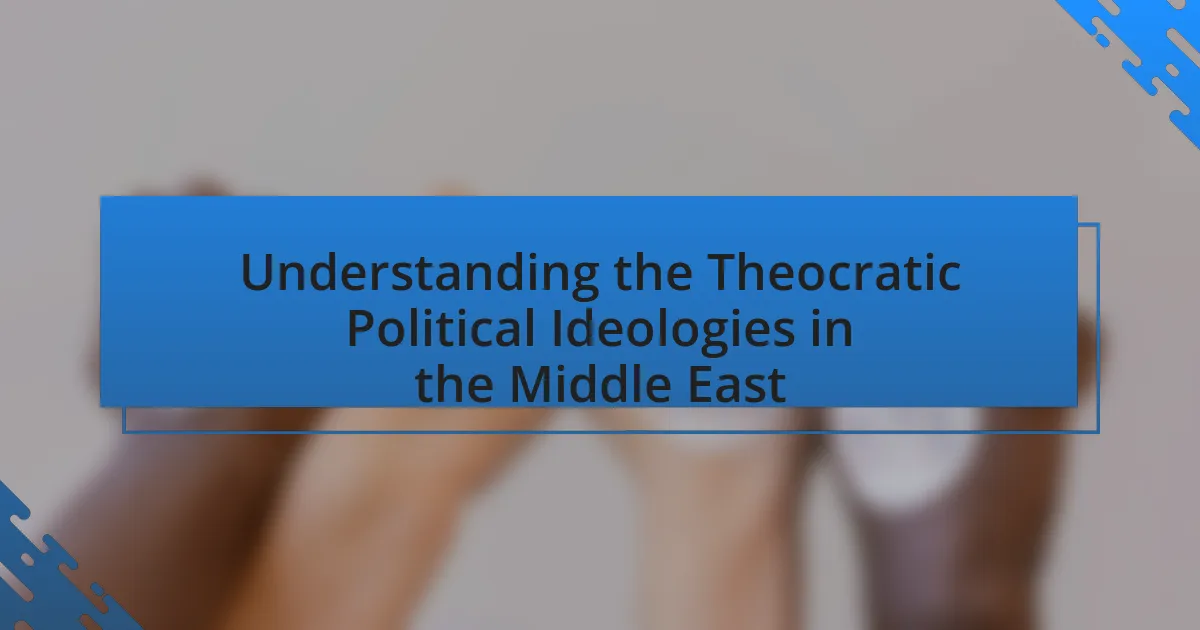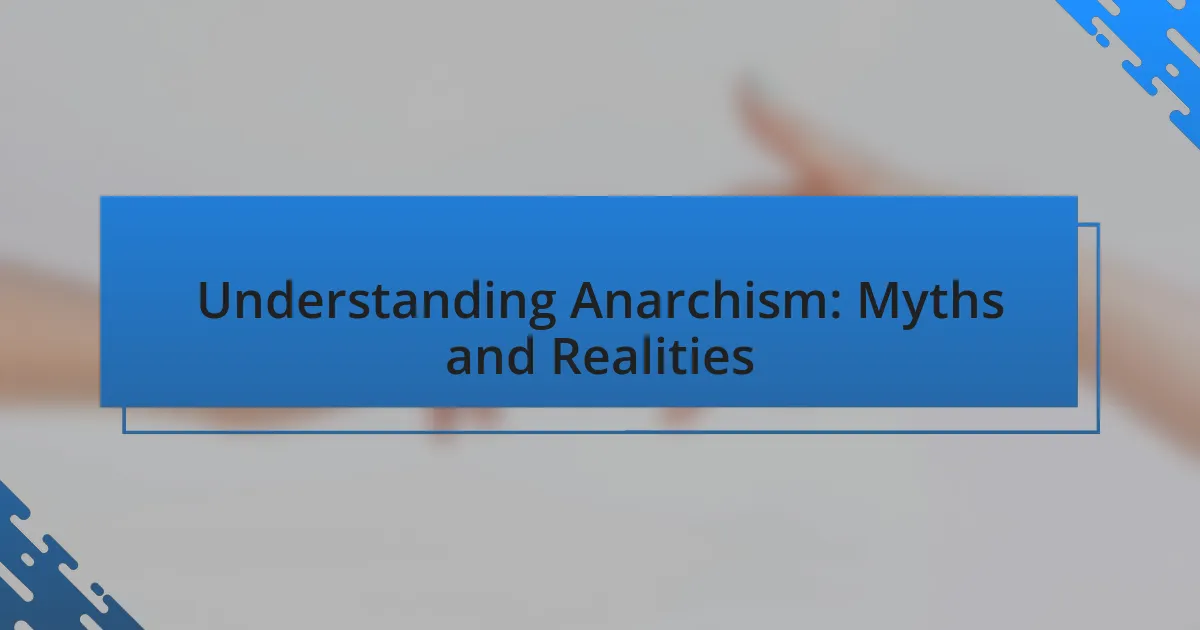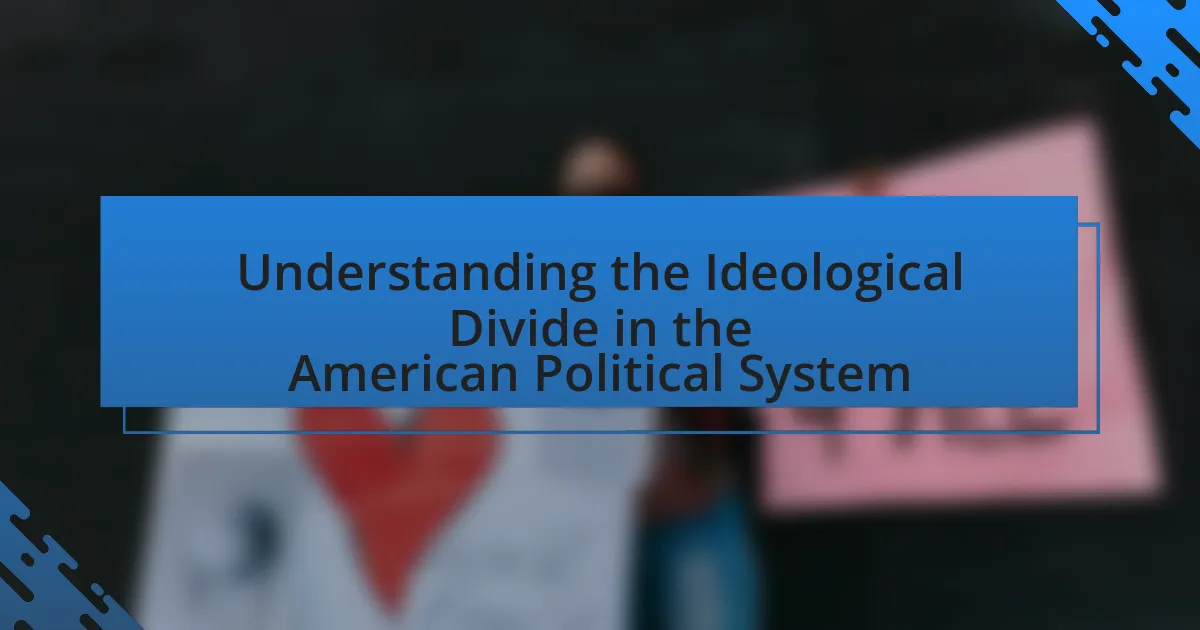The article examines the ideological foundations of political parties worldwide, categorizing them into key ideologies such as liberalism, conservatism, socialism, nationalism, and environmentalism. It explores how these ideologies shape party platforms, influence voter behavior, and determine policy priorities. Additionally, the article discusses the historical contexts that inform these ideologies, the importance of understanding them for informed citizenship, and the ways in which political parties evolve over time in response to social movements and changing public sentiments. It also highlights the practical implications of these ideologies for governance and the strategies parties use to communicate their beliefs effectively.

What are the Ideological Foundations of Political Parties Worldwide?
The ideological foundations of political parties worldwide are primarily categorized into several key ideologies, including liberalism, conservatism, socialism, nationalism, and environmentalism. Liberalism emphasizes individual rights, democracy, and free markets, as seen in parties like the Liberal Democrats in the UK. Conservatism focuses on tradition, social stability, and maintaining established institutions, exemplified by the Republican Party in the United States. Socialism advocates for social ownership and egalitarianism, represented by parties such as the Labour Party in the UK. Nationalism prioritizes national interests and identity, often leading to the rise of right-wing populist parties globally. Environmentalism, increasingly significant, promotes ecological sustainability and is represented by parties like the Green Party in various countries. These ideological foundations shape party platforms, influence voter behavior, and determine policy priorities across different political systems.
How do political ideologies shape party platforms?
Political ideologies fundamentally shape party platforms by providing a framework of beliefs and values that guide policy positions and electoral strategies. For instance, a party that identifies with liberal ideology typically emphasizes social equality, environmental protection, and government intervention in the economy, which directly influences its platform proposals such as healthcare reform and climate change initiatives. Conversely, a conservative party often prioritizes free market principles, individual liberties, and limited government, leading to platform elements that advocate for tax cuts and deregulation. Historical examples include the Democratic Party in the United States, which has increasingly embraced progressive ideologies since the 1960s, resulting in platforms that focus on civil rights and social justice, while the Republican Party has shifted towards more conservative stances on fiscal and social issues since the 1980s. This ideological alignment ensures that party platforms resonate with their core voter base, thereby shaping electoral outcomes and legislative agendas.
What are the key components of political ideologies?
The key components of political ideologies include beliefs about human nature, the role of government, economic systems, social justice, and the relationship between individuals and society. These components shape how political parties formulate policies and engage with citizens. For instance, liberal ideologies typically advocate for individual freedoms and social equality, while conservative ideologies emphasize tradition and social order. Historical examples, such as the rise of socialism in the 19th century, illustrate how these components influence political movements and party platforms.
How do historical contexts influence these ideologies?
Historical contexts significantly influence ideologies by shaping the values, beliefs, and priorities of political movements. For instance, the rise of socialism in the late 19th century was largely a response to the industrial revolution, which created stark economic inequalities and labor exploitation. This historical backdrop led to the development of ideologies advocating for workers’ rights and social welfare, as seen in the establishment of labor unions and socialist parties across Europe. Similarly, the context of post-colonialism in the mid-20th century influenced nationalist ideologies in various countries, where the struggle for independence from colonial powers fostered a sense of identity and self-determination. These examples illustrate how specific historical events and conditions directly inform the ideological frameworks that political parties adopt and promote.
Why is understanding political ideologies important?
Understanding political ideologies is important because they shape the beliefs, values, and policies of political parties and influence governance. Political ideologies provide frameworks for analyzing political behavior, guiding voter preferences, and informing public policy decisions. For instance, ideologies such as liberalism, conservatism, socialism, and nationalism offer distinct perspectives on issues like economic management, social justice, and individual rights, which can significantly impact societal outcomes. Historical examples, such as the rise of fascism in the early 20th century, illustrate how ideologies can lead to profound changes in political landscapes and societal structures. Thus, grasping these ideologies is essential for informed citizenship and effective participation in democratic processes.
How do ideologies affect voter behavior?
Ideologies significantly influence voter behavior by shaping individuals’ beliefs, values, and preferences regarding political issues and candidates. For instance, voters who identify with liberal ideologies tend to support policies that promote social equality and government intervention in the economy, while conservative voters often prioritize free-market principles and traditional social values. Research indicates that ideological alignment can predict voting patterns; a study by the Pew Research Center found that 90% of consistently liberal voters supported Democratic candidates in the 2020 election, while 90% of consistently conservative voters backed Republican candidates. This demonstrates that ideologies serve as a framework through which voters interpret political information and make electoral decisions.
What role do ideologies play in governance?
Ideologies play a crucial role in governance by shaping political agendas, influencing policy decisions, and guiding the behavior of political actors. They provide a framework for understanding societal issues and determining the appropriate responses to them. For instance, liberal ideologies often prioritize individual freedoms and social equality, leading to policies that promote civil rights and welfare programs, while conservative ideologies may emphasize tradition and economic freedom, resulting in policies that focus on limited government intervention and free markets. Historical examples include the New Deal policies of the 1930s in the United States, which were driven by progressive ideologies aimed at economic recovery and social reform, demonstrating how ideologies can directly impact governance and societal outcomes.
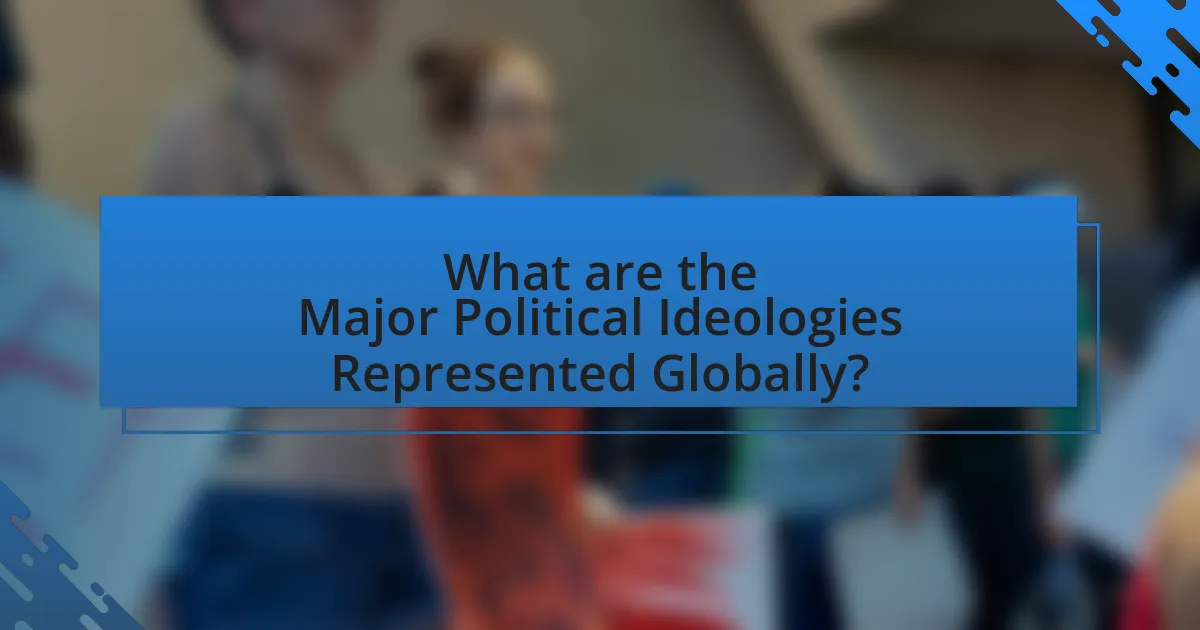
What are the Major Political Ideologies Represented Globally?
The major political ideologies represented globally include liberalism, conservatism, socialism, nationalism, and fascism. Liberalism advocates for individual freedoms, democracy, and market economy, as seen in Western democracies. Conservatism emphasizes tradition, social stability, and maintaining established institutions, prevalent in various countries like the United States and the United Kingdom. Socialism focuses on social ownership and egalitarianism, with examples in countries like Cuba and Venezuela. Nationalism prioritizes the interests of a particular nation, often leading to policies that promote national sovereignty, as observed in India and Hungary. Fascism, characterized by authoritarianism and nationalism, has historical examples in regimes like Nazi Germany and Fascist Italy. These ideologies shape political discourse and party platforms worldwide, influencing governance and policy-making.
What are the characteristics of liberalism?
Liberalism is characterized by its emphasis on individual rights, democracy, and the rule of law. Individual rights are central to liberalism, advocating for personal freedoms such as speech, religion, and property ownership, which are protected from government interference. Democracy is another key characteristic, as liberalism promotes representative government and the participation of citizens in political processes, ensuring that power derives from the consent of the governed. The rule of law is fundamental, establishing that laws apply equally to all individuals, thereby preventing arbitrary governance. Historically, these principles emerged during the Enlightenment and were further solidified through revolutions, such as the American and French Revolutions, which sought to establish governments based on these liberal ideals.
How does liberalism manifest in different countries?
Liberalism manifests in different countries through varying political, economic, and social frameworks that prioritize individual freedoms, democratic governance, and market economies. In the United States, liberalism emphasizes civil liberties and social justice, evident in policies promoting equal rights and healthcare access. In Western European nations like Germany and the Netherlands, liberalism is characterized by strong welfare states that balance free-market principles with social safety nets, reflecting a commitment to both individual rights and collective well-being. In contrast, in countries like India, liberalism is expressed through a focus on democratic pluralism and economic liberalization, which aims to integrate diverse cultural identities while fostering economic growth. These manifestations are supported by historical contexts, such as the Enlightenment’s influence on Western political thought and the post-colonial movements in Asia, which shaped local interpretations of liberal ideals.
What are the critiques of liberalism?
Critiques of liberalism include its perceived individualism, which can undermine community and social cohesion. Critics argue that liberalism prioritizes personal freedom over collective well-being, leading to social fragmentation. Additionally, the economic aspect of liberalism is often criticized for fostering inequality, as free-market policies can benefit the wealthy disproportionately, leaving marginalized groups behind. Historical evidence, such as the rise of income inequality in capitalist societies, supports this critique. Furthermore, liberalism’s emphasis on rationality and universalism is challenged for neglecting cultural and historical contexts, which can result in a one-size-fits-all approach that fails to address specific societal needs.
What defines conservatism in political contexts?
Conservatism in political contexts is defined by a commitment to preserving traditional institutions, values, and practices while advocating for gradual change rather than radical reform. This ideology emphasizes the importance of stability, order, and continuity in society, often rooted in historical precedent and cultural heritage. For instance, conservative political movements in various countries, such as the Republican Party in the United States and the Conservative Party in the United Kingdom, prioritize limited government intervention in the economy, individual liberties, and a strong national defense, reflecting a belief in personal responsibility and free-market principles. Historical examples include the post-World War II conservative resurgence, which sought to counteract the expansion of government and promote economic growth through deregulation and tax cuts, illustrating the practical application of conservative principles in governance.
How do conservative parties differ across regions?
Conservative parties differ across regions primarily in their ideological emphasis and policy priorities. In North America, conservative parties often focus on free-market principles and individual liberties, as seen in the Republican Party’s advocacy for lower taxes and limited government intervention. In contrast, European conservative parties, such as Germany’s Christian Democratic Union, may prioritize social welfare and environmental sustainability alongside economic conservatism, reflecting a broader acceptance of state involvement in social issues. Additionally, in regions like Latin America, conservative parties may align more closely with traditional values and religious influences, often opposing progressive social reforms. These regional variations are influenced by historical, cultural, and socio-economic contexts, demonstrating that conservatism is not a monolithic ideology but rather a spectrum shaped by local factors.
What challenges do conservative ideologies face today?
Conservative ideologies today face significant challenges including demographic shifts, cultural changes, and the rise of progressive movements. These demographic shifts, particularly in Western countries, show increasing diversity and younger populations that tend to lean more liberal, which undermines traditional conservative bases. Cultural changes, such as evolving views on social issues like gender and sexuality, further challenge conservative positions that often rely on traditional values. Additionally, the rise of progressive movements, exemplified by the popularity of policies like universal healthcare and climate action, creates pressure on conservative parties to adapt or risk losing relevance. These factors collectively contribute to a diminishing influence of conservative ideologies in contemporary political discourse.
What is socialism and how is it represented in political parties?
Socialism is an economic and political system advocating for collective or governmental ownership and administration of the means of production and distribution of goods. In political parties, socialism is represented through platforms that emphasize social welfare, economic equality, and the redistribution of wealth, often advocating for policies such as universal healthcare, free education, and workers’ rights. For example, parties like the Democratic Socialists of America promote these ideals by pushing for policies that aim to reduce income inequality and expand social services, reflecting the core tenets of socialism in their political agendas.
What variations of socialism exist worldwide?
Variations of socialism worldwide include democratic socialism, Marxism, Leninism, Maoism, and libertarian socialism. Democratic socialism advocates for political democracy alongside social ownership of the means of production, as seen in countries like Sweden and Norway. Marxism, founded by Karl Marx, emphasizes class struggle and the eventual establishment of a classless society, influencing various movements globally. Leninism, an adaptation of Marxism by Vladimir Lenin, focuses on a vanguard party leading the revolution, which shaped the Soviet Union’s political structure. Maoism, developed by Mao Zedong, incorporates peasant-based revolution and has influenced movements in countries like China and Nepal. Libertarian socialism seeks to abolish the state and promote direct democracy and cooperative management, with examples in anarchist movements. Each variation reflects distinct historical contexts and ideological principles, demonstrating the diversity within socialist thought.
How do socialist parties address contemporary issues?
Socialist parties address contemporary issues by advocating for policies that promote social equity, environmental sustainability, and workers’ rights. They focus on addressing income inequality through progressive taxation and social welfare programs, aiming to reduce the wealth gap. For instance, many socialist parties support universal healthcare and free education as fundamental rights, which are designed to ensure access for all citizens, regardless of their economic status. Additionally, they emphasize the importance of combating climate change through green policies and sustainable practices, reflecting a commitment to environmental justice. Evidence of their influence can be seen in countries like Sweden and Norway, where socialist parties have successfully implemented comprehensive social safety nets and labor protections, resulting in higher standards of living and lower poverty rates.
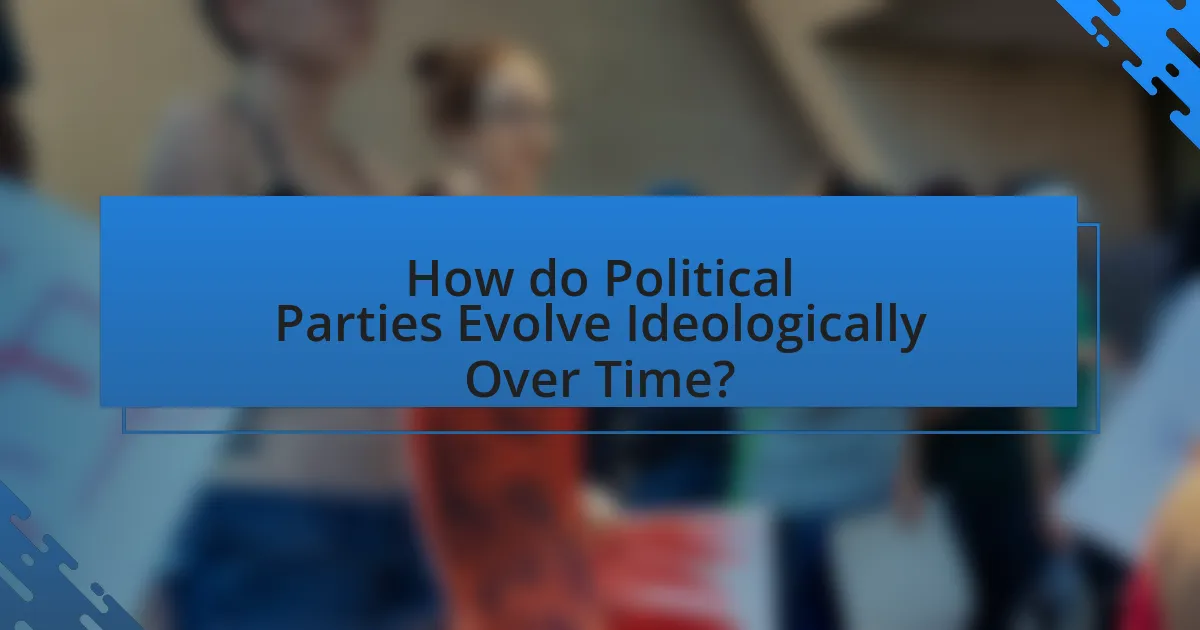
How do Political Parties Evolve Ideologically Over Time?
Political parties evolve ideologically over time through a combination of social, economic, and political changes that influence their platforms and policies. For instance, the Democratic Party in the United States shifted from a pro-slavery stance in the 19th century to advocating for civil rights and social justice in the 20th century, reflecting broader societal changes and movements. Additionally, the Republican Party has transitioned from its origins as an anti-slavery party to embracing conservative economic policies and social issues, influenced by shifts in voter demographics and public opinion. These ideological transformations are often driven by key events, such as economic crises, wars, or social movements, which compel parties to adapt their positions to maintain relevance and support among constituents.
What factors contribute to the ideological evolution of political parties?
The ideological evolution of political parties is primarily influenced by social movements, demographic changes, economic conditions, and shifts in public opinion. Social movements, such as civil rights or environmental activism, often push parties to adopt new ideologies or modify existing ones to align with emerging societal values. Demographic changes, including shifts in age, ethnicity, and education levels, can lead parties to reevaluate their platforms to attract diverse voter bases. Economic conditions, such as recessions or booms, compel parties to adjust their policies to address the immediate concerns of the electorate. Lastly, shifts in public opinion, often measured through polling data, can prompt parties to evolve ideologically to remain relevant and competitive. These factors collectively shape the ideological landscape of political parties over time.
How do social movements influence party ideologies?
Social movements influence party ideologies by shaping public discourse, mobilizing grassroots support, and pressuring political parties to adopt specific policy positions. For instance, the civil rights movement in the United States significantly shifted the Democratic Party’s stance on racial equality, leading to the adoption of policies aimed at desegregation and anti-discrimination. This influence is evident in the 1964 Civil Rights Act, which was a direct response to the demands of social movements advocating for racial justice. Additionally, social movements can introduce new ideas and values into the political arena, prompting parties to realign their platforms to remain relevant and responsive to their constituents.
What role does globalization play in ideological shifts?
Globalization significantly influences ideological shifts by facilitating the exchange of ideas, values, and cultural practices across borders. This interconnectedness allows for the rapid dissemination of political ideologies, leading to the adaptation and transformation of local beliefs in response to global trends. For instance, the rise of neoliberalism in various countries can be traced back to the global economic policies promoted by international institutions like the International Monetary Fund and the World Bank, which advocate for free markets and reduced government intervention. Additionally, globalization has enabled social movements, such as environmentalism and human rights advocacy, to gain traction worldwide, prompting political parties to realign their platforms to address these emerging concerns.
How do political parties adapt to changing public sentiments?
Political parties adapt to changing public sentiments by modifying their platforms, policies, and communication strategies to align with the evolving preferences and concerns of the electorate. For instance, parties often conduct opinion polls and focus groups to gauge public opinion, allowing them to identify key issues that resonate with voters. Historical examples include the Democratic Party’s shift towards more progressive policies in response to the growing support for social justice movements in the United States, particularly during the 2010s. Additionally, political parties may engage in grassroots mobilization and utilize social media to connect with constituents, ensuring their messages reflect current public sentiments. This responsiveness is crucial for maintaining electoral viability and relevance in a dynamic political landscape.
What strategies do parties use to realign their ideologies?
Political parties employ several strategies to realign their ideologies, including coalition-building, issue framing, and grassroots mobilization. Coalition-building allows parties to form alliances with other groups, broadening their ideological base and appealing to a wider electorate. For instance, in the 2016 U.S. presidential election, the Democratic Party sought to realign by forming coalitions with progressive movements, which helped to attract younger voters.
Issue framing involves redefining key political issues to resonate with changing public sentiments. The Republican Party, for example, has shifted its stance on immigration over the years to align with the concerns of its base, emphasizing border security while also appealing to economic arguments.
Grassroots mobilization is another effective strategy, where parties engage directly with constituents to understand their needs and adjust their platforms accordingly. The rise of social media has amplified this approach, enabling parties to gather real-time feedback and adapt their messaging.
These strategies demonstrate how parties can effectively realign their ideologies to remain relevant and competitive in the political landscape.
How do electoral outcomes impact ideological changes?
Electoral outcomes significantly influence ideological changes by shifting the political landscape and altering party platforms. When a political party wins an election, it often gains the mandate to implement its policies, which can lead to a redefinition of its ideological stance to align with voter expectations and preferences. For instance, the 2008 U.S. presidential election resulted in the Democratic Party adopting more progressive policies in response to the electorate’s desire for change, reflecting a shift towards a more liberal ideology. Additionally, electoral defeats can prompt parties to reassess their ideologies, as seen in the Republican Party’s response to the 2012 election loss, which led to internal debates about the party’s direction and a push towards more inclusive policies. These dynamics illustrate how electoral outcomes serve as catalysts for ideological evolution within political parties.
What are the practical implications of understanding political ideologies?
Understanding political ideologies has significant practical implications for governance, policy-making, and societal cohesion. By comprehending the core beliefs and values that drive different political ideologies, individuals and leaders can better navigate political landscapes, anticipate policy outcomes, and engage in informed debates. For instance, recognizing the differences between liberalism and conservatism can help policymakers craft legislation that aligns with the values of their constituents, thereby enhancing democratic responsiveness. Additionally, studies show that societies with a clear understanding of political ideologies tend to exhibit higher levels of political participation and civic engagement, as citizens feel more empowered to advocate for their beliefs. This understanding also aids in conflict resolution, as it fosters dialogue and compromise among diverse ideological groups, ultimately contributing to social stability.
How can voters make informed decisions based on party ideologies?
Voters can make informed decisions based on party ideologies by researching and understanding the core beliefs and policy positions of each political party. This involves examining party platforms, official statements, and voting records to identify how closely a party’s ideology aligns with the voter’s values and priorities. For instance, a study by the Pew Research Center found that voters who engage with party ideologies are more likely to participate in elections and make choices that reflect their beliefs. By analyzing these ideological frameworks, voters can discern which parties advocate for issues such as healthcare, education, and economic policy that resonate with their personal convictions.
What strategies can political parties employ to communicate their ideologies effectively?
Political parties can employ several strategies to communicate their ideologies effectively, including targeted messaging, social media engagement, and grassroots mobilization. Targeted messaging involves crafting specific narratives that resonate with particular demographics, ensuring that the party’s core values are articulated in a relatable manner. For instance, during the 2008 U.S. presidential election, Barack Obama’s campaign effectively used targeted messaging to appeal to younger voters by focusing on issues like climate change and education reform.
Social media engagement allows political parties to reach a broader audience quickly and interactively. Platforms like Twitter and Facebook enable parties to disseminate their ideologies in real-time, respond to public concerns, and create a sense of community among supporters. A study by the Pew Research Center in 2020 found that 69% of adults in the U.S. use social media, highlighting its importance as a communication tool for political ideologies.
Grassroots mobilization involves organizing local supporters to advocate for the party’s ideology within their communities. This strategy not only amplifies the party’s message but also fosters a sense of ownership among supporters. Historical examples include the Civil Rights Movement, where grassroots efforts were crucial in promoting the ideology of equality and justice.
These strategies, when effectively implemented, enhance the clarity and reach of a political party’s ideological communication.



